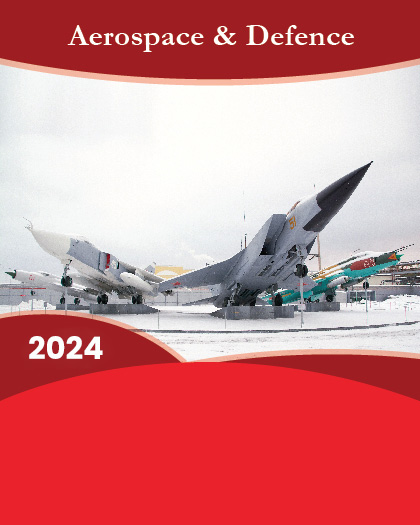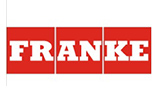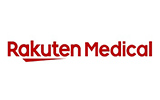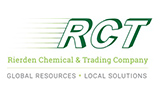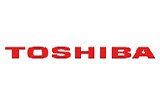CHAPTER 1 INTRODUCTION
1.1 Report description
1.2 Key benefits
1.3 Key market segments
1.4 Research methodology
1.4.1 Secondary research
1.4.2 Primary research
1.4.3 Analyst tools and models
CHAPTER 2 EXECUTIVE SUMMARY
2.1 CXO perspective
CHAPTER 3 MARKET OVERVIEW
3.1 Market definition and scope
3.2 Key findings
3.2.1 Top impacting factors
3.2.2 Top winning strategies
3.2.3 Top investment pockets
3.3 Value chain analysis
3.3.1 Design
3.3.2 Parts and components manufacturing
3.3.3 System integration
3.3.4 Marketing and sales
3.3.5 Customers
3.3.6 Post sales services
3.4 Porters five forces analysis
3.4.1 Low bargaining power of buyers due to oligopoly in the market
3.4.2 Large number of buyers and high switching costs for customers lead to high bargaining power of suppliers
3.4.3 Presence of strong brands and innovative technology leads to intense rivalry among competitors
3.4.4 Moderate threat of substitutes due to competition from short-distance fast trains and advanced real-time communication technology
3.4.5 Low threat from new entrants due to high initial investment costs and stiff competition from established brands
3.5 Market share analysis, 2015
3.6 Drivers
3.6.1 Increase in number of air passengers
3.6.2 Improvement in commercial aviation network
3.6.3 Rise in tourism and economic development
3.6.4 Environment-friendly and fuel-efficient aircraft
3.7 Restraints
3.7.1 Lack of security and terrorism
3.7.2 Congestion and delay
3.8 Opportunities
3.8.1 Emerging markets to create new growth opportunities
3.8.2 Government initiatives to promote commercial aircraft market
CHAPTER 4 WORLD COMMERCIAL AIRCRAFT MARKET, BY ENGINE TYPE
4.1 Market size and forecast
4.2 Turbofan
4.2.1 Key market trends
4.2.2 Key growth factors and opportunities
4.2.3 Market size and forecast
4.3 Turboprop
4.3.1 Key market trends
4.3.2 Key growth factors and opportunities
4.3.3 Market size and forecast
CHAPTER 5 WORLD COMMERCIAL AIRCRAFT MARKET, BY AIRCRAFT SIZE
5.1 Market size and forecast
5.2 Wide-body aircraft
5.2.1 Key market trends
5.2.2 Key growth factors and opportunities
5.2.3 Market size and forecast
5.3 Narrow-body aircraft
5.3.1 Key market trends
5.3.2 Key growth factors and opportunities
5.3.3 Market size and forecast
5.4 Regional jets
5.4.1 Key market trends
5.4.2 Key growth factors and opportunities
5.4.3 Market size and forecast
CHAPTER 6 WORLD COMMERCIAL AIRCRAFT MARKET, BY USE CASE
6.1 Market size and forecast
6.2 Government
6.2.1 Key market trends
6.2.2 Key growth factors and opportunities
6.2.3 Market size and forecast
6.3 Private sector
6.3.1 Key market trends
6.3.2 Key growth factors and opportunities
6.3.3 Market size and forecast
CHAPTER 7 WORLD COMMERCIAL AIRCRAFT MARKET, BY GEOGRAPHY
7.1 Market size and forecast
7.2 North America
7.2.1 Key market trends
7.2.2 Key growth factors and opportunities
7.2.3 Market size and forecast
7.2.3.1 U.S.
7.2.3.1.1 MARKET SIZE & FORECAST
7.2.3.2 Canada
7.2.3.2.1 MARKET SIZE & FORECAST
7.2.3.3 Mexico
7.2.3.3.1 MARKET SIZE & FORECAST
7.3 Europe
7.3.1 Key market trends
7.3.2 Key growth factors and opportunities
7.3.3 Market size and forecast
7.3.3.1 UK
7.3.3.1.1 MARKET SIZE & FORECAST
7.3.3.2 Germany
7.3.3.2.1 MARKET SIZE & FORECAST
7.3.3.3 France
7.3.3.3.1 MARKET SIZE & FORECAST
7.3.3.4 Spain
7.3.3.4.1 MARKET SIZE & FORECAST
7.3.3.5 Italy
7.3.3.5.1 MARKET SIZE & FORECAST
7.3.3.6 Rest of Europe
7.3.3.6.1 MARKET SIZE & FORECAST
7.4 Asia-Pacific
7.4.1 Key market trends
7.4.2 Key growth factors and opportunities
7.4.3 Market size and forecast
7.4.3.1 China
7.4.3.1.1 MARKET SIZE & FORECAST
7.4.3.2 Japan
7.4.3.2.1 MARKET SIZE & FORECAST
7.4.3.3 India
7.4.3.3.1 MARKET SIZE & FORECAST
7.4.3.4 Rest of APAC
7.4.3.4.1 MARKET SIZE & FORECAST
7.5 LAMEA
7.5.1 Key market trends
7.5.2 Key growth factors and opportunities
7.5.3 Market size and forecast
7.5.3.1 Latin America
7.5.3.1.1 MARKET SIZE & FORECAST
7.5.3.2 Middle East
7.5.3.2.1 MARKET SIZE & FORECAST
7.5.3.3 Africa
7.5.3.3.1 MARKET SIZE & FORECAST
CHAPTER 8 COMPANY PROFILES
8.1 Airbus Group SE
8.1.1 Company overview
8.1.2 Business performance
8.1.3 Key strategic moves and development
8.2 The Boeing Company
8.2.1 Company overview
8.2.2 Business performance
8.2.3 Key strategic moves and development
8.3 Bombardier Inc.
8.3.1 Company overview
8.3.2 Business performance
8.3.3 Key strategic moves and development
8.4 Commercial Aircraft Corporation of China, Ltd.
8.4.1 Company overview
8.4.2 Key strategic moves and development
8.5 Embraer S.A.
8.5.1 Company overview
8.5.2 Business performance
8.5.3 Key strategic moves and development
8.6 Public Joint Stock Company United Aircraft Corporation
8.6.1 Company overview
8.6.2 Business performance
8.6.3 Key strategic moves and development
8.7 GE Aviation
8.7.1 Company overview
8.7.2 Business performance
8.7.3 Key strategic moves and development
8.8 United Technologies Corporation
8.8.1 Company overview
8.8.2 Business performance
8.8.3 Key strategic moves and development
8.9 Lockheed Martin Corporation
8.9.1 Company overview
8.9.2 Business performance
8.9.3 Key strategic moves and development
8.10 Leonardo-Finmeccanica S.p.a.
8.10.1 Company overview
8.10.2 Business performance
8.10.3 Key strategic moves and development

